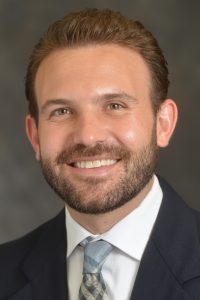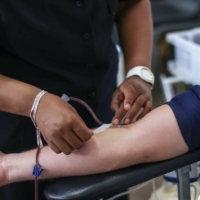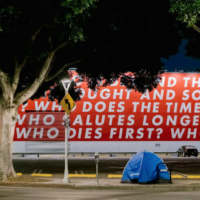How Safer Drug Consumption Programs Can Help HIV Prevention Southern California HIV/AIDS Policy Research Center releases policy brief showing the impact of safer drug consumption sites

Ian Holloway
A policy brief published by the Southern California HIV/AIDS Policy Research Center confirms that safer drug consumption sites can reduce the risk and incidence of HIV and Hepatitis C infection.
The Southern California HIV/AIDS Policy Research Center is a partnership between the UCLA Luskin School of Public Affairs, APLA Health and the Los Angeles LGBT Center. Ian Holloway, assistant professor of Social Welfare at UCLA Luskin, is the center’s principal investigator.
Proposed legislation in California Assembly Bill 186 seeks to implement safer drug consumption sites in locations throughout California. These sites provide supervision by trained personnel, offer safe and sterilized equipment, and link people to medical care and substance use treatment.
Given that the risk factors presented by the opioid epidemic and increased intravenous drug use overlap substantially with risk factors associated with higher rates of HIV transmission, the policy brief clarifies the state of research pertaining to both epidemics. It identifies Californians that are impacted by and at greater risk of both intravenous drug use and HIV infection, and reviews research evidence for how safer drug consumption sites may be a key HIV prevention tool.
“Evidence shows that the HIV and opioid epidemics dangerously intersect,” said lead author Robert Gamboa, a Master of Public Policy (MPP) student at the UCLA Luskin School of Public Affairs. “Because of this relationship, the evolving frontier of HIV prevention must consider implementing safer drug consumption sites as an effective strategy. This intervention has the potential to prevent the further spread of HIV and other blood borne diseases while also saving lives from opioid overdose.”
Key findings of the report:
- In 2015, California saw more than 4,700 new cases of HIV, was third in the nation for HIV transmissions via injection drug use and first in the national among men who have sex with men who inject drugs.
- Other key groups impacted by both epidemics include women, people of color, those who are homeless and youth. Research has found that people who inject drugs from these subgroups are 4-29 times more likely to have an HIV-positive diagnosis.
- Safer drug consumption sites offer supervision by trained personnel, safe and sterilized equipment, and link people to medical care and substance use treatment thereby reducing risk of HIV and Hepatitis C infection.
- Safer drug consumption sites can help to facilitate continuity of care for both addiction and HIV among people living with HIV who use drugs.
- In California, researchers have estimated that a single safe injection site in San Francisco could prevent 3.3 new HIV transmissions per year and would save the State of California roughly $3.5 million per year in expenses related to health care, emergency services and crime.
San Francisco recently joined Seattle and Philadelphia in implementing safer drug consumption sites in their jurisdiction. Prior research has provided evidence for leveraging safer drug consumption sites as an effective HIV prevention strategy.
Should state legislation clear the way for California to implement the strategy statewide, research supports the inclusion of broad HIV prevention and treatment services at local sites. To access the full report, visit www.chprc.org.








Leave a Reply
Want to join the discussion?Feel free to contribute!